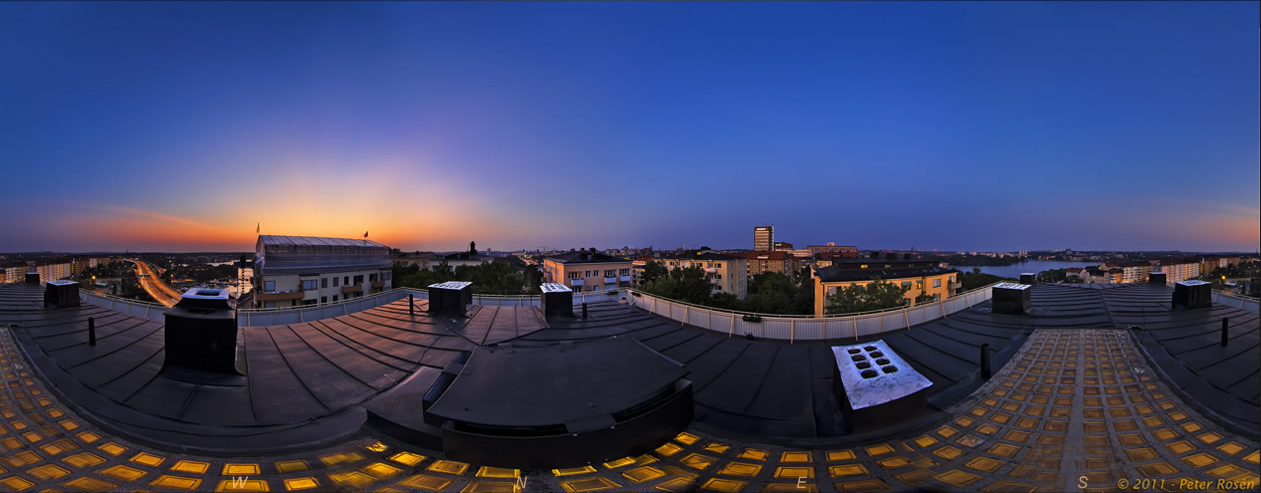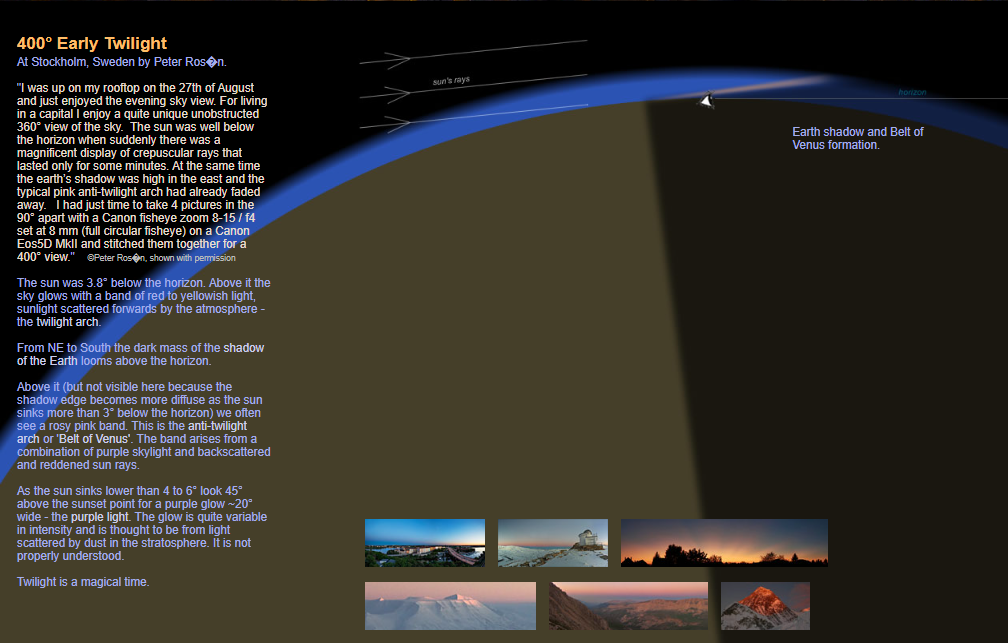OPOD - Early Twilight
OPOD - Early Twilight: A Captivating Phenomenon
Twilight, the period between daylight and darkness, has always held a certain allure. The gradual transition from day to night paints the sky with a mesmerizing display of colors and atmospheric phenomena. One such captivating phenomenon is early twilight, which occurs when the sun is 3.8° below the horizon. In this article, we will delve deeper into the enchanting world of early twilight and explore the various elements that contribute to its breathtaking beauty.
A Glimpse of Early Twilight in Stockholm
Imagine standing on a rooftop in Stockholm, Sweden, on a calm evening in late August. As you gaze up at the sky, you are greeted by an extraordinary sight. The sun has already dipped below the horizon, but the atmosphere still holds remnants of its radiant light. Suddenly, a dazzling show of crepuscular rays illuminates the heavens for a fleeting moment. This ephemeral display captures the attention of Peter Rosén, an avid sky observer, who quickly seizes the opportunity to capture the spectacle through his camera lens.
The Twilight Arch: A Band of Radiant Light
Above the sun's position, a band of red to yellowish light glows in the sky. This luminous band, known as the twilight arch, is created by sunlight scattered forward by the Earth's atmosphere. As the sun sinks lower, this arch becomes more prominent, casting a captivating glow across the horizon. The intensity and color of the twilight arch can vary, painting the sky with a palette that ranges from fiery reds to soft pastels.
The Earth's Shadow and the Belt of Venus
From the northeastern to southern horizon, another remarkable feature comes into view during early twilight. The dark mass of the Earth's shadow looms above the horizon, creating a stark contrast against the glowing twilight arch. Just above the shadow's edge, a rosy pink band often emerges, known as the anti-twilight arch or the "Belt of Venus." This ethereal band is a result of a combination of purple skylight and backscattered and reddened sun rays, creating a stunning visual contrast against the dark shadow.
The Enigmatic Purple Glow
As the sun sinks even lower, beyond 4 to 6° below the horizon, a mysterious purple glow appears approximately 45° above the sunset point. This purple light, spanning around 20° in width, adds an enigmatic touch to the twilight spectacle. Scientists believe that this purple glow is caused by light scattered by dust particles in the stratosphere, but the exact mechanisms behind this phenomenon are not yet fully understood. The intensity of the purple glow can vary, adding an element of unpredictability to the already captivating twilight scene.
The Allure of Twilight
Twilight, in all its forms, holds a certain magic that captivates observers worldwide. It is a time of transition, where the boundaries between day and night blur, and nature paints the sky with an exquisite palette of colors. Whether it's the gentle hues of the twilight arch, the dramatic interplay between light and shadow, or the enigmatic purple glow, early twilight offers a glimpse into a world where beauty and wonder collide.
Conclusion
Early twilight is a remarkable atmospheric optics phenomenon that enchants skywatchers with its ever-changing display of colors and celestial elements. From the radiant glow of the twilight arch to the mysterious purple light and the interplay between light and shadow, each moment during early twilight is a testament to the beauty and complexity of our atmosphere. So, next time you find yourself outside during this magical time, take a moment to immerse yourself in the captivating world of early twilight and marvel at the wonders that unfold before your eyes.

400° Early Twilight
At Stockholm, Sweden by Peter Ros�n.
"I was up on my rooftop on the 27th of August and just enjoyed the evening sky view. For living in a capital I enjoy a quite unique unobstructed 360° view of the sky. The sun was well below the horizon when suddenly there was a magnificent display of crepuscular rays that lasted only for some minutes. At the same time the earth’s shadow was high in the east and the typical pink anti-twilight arch had already faded away. I had just time to take 4 pictures in the 90° apart with a Canon fisheye zoom 8-15 / f4 set at 8 mm (full circular fisheye) on a Canon Eos5D MkII and stitched them together for a 400° view." ©Peter Ros�n, shown with permission
The sun was 3.8° below the horizon. Above it the sky glows with a band of red to yellowish light, sunlight scattered forwards by the atmosphere - the twilight arch.
From NE to South the dark mass of the shadow of the Earth looms above the horizon.
Above it (but not visible here because the shadow edge becomes more diffuse as the sun sinks more than 3° below the horizon) we often see a rosy pink band. This is the anti-twilight arch or 'Belt of Venus'. The band arises from a combination of purple skylight and backscattered and reddened sun rays.
As the sun sinks lower than 4 to 6° look 45° above the sunset point for a purple glow ~20° wide - the purple light. The glow is quite variable in intensity and is thought to be from light scattered by dust in the stratosphere. It is not properly understood.
Twilight is a magical time.

Note: this article has been automatically converted from the old site and may not appear as intended. You can find the original article here.
Reference Atmospheric Optics
If you use any of the definitions, information, or data presented on Atmospheric Optics, please copy the link or reference below to properly credit us as the reference source. Thank you!
-
<a href="https://atoptics.co.uk/blog/opod-early-twilight/">OPOD - Early Twilight</a>
-
"OPOD - Early Twilight". Atmospheric Optics. Accessed on April 16, 2024. https://atoptics.co.uk/blog/opod-early-twilight/.
-
"OPOD - Early Twilight". Atmospheric Optics, https://atoptics.co.uk/blog/opod-early-twilight/. Accessed 16 April, 2024
-
OPOD - Early Twilight. Atmospheric Optics. Retrieved from https://atoptics.co.uk/blog/opod-early-twilight/.